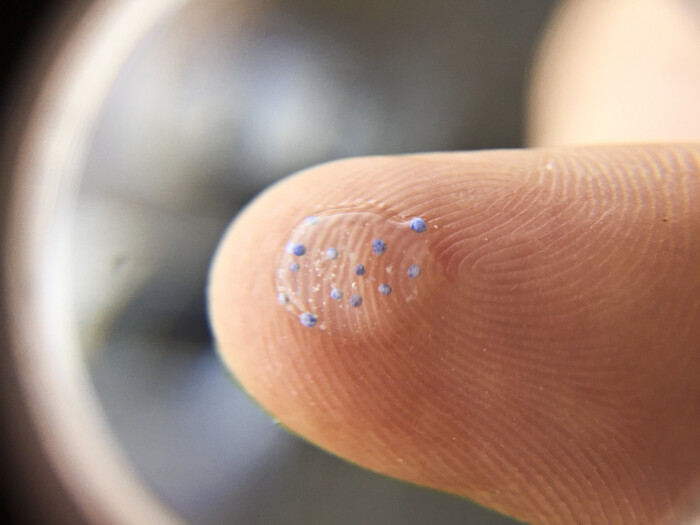Traces of plastic micro-particles were detected in 6 out of 10 samples of seminal fluid from healthy men residing in Campania. This is shown by the results of an Italian study published in preprint on the SSRN platform and previewed at the Congress of the Italian Society of Human Reproduction, underway in Syracuse. The results, the researchers explain, indicate that "the microplastics emergency is increasingly dangerous for the reproduction of the human species".
Already in January 2023, in the journal Toxics, the same group had identified microplastics in the urine of residents of Naples and Salerno for the first time. In this case, thanks to the use of Raman Microspectroscopy, 16 fragments of microplastics were identified in human sperm measuring from 2 to 6 microns, i.e. smaller than a speck of dust. Among the substances found polypropylene, polyethylene, polystyrene, polyvinyl chloride, polycarbonate and acrylic material.
There was also a greater presence of microplastics in relation to the poorer seminal quality, which however needs further investigation. The hypothesis, however, could be supported by the fact that the same microplastics "act as a Trojan horse for other environmental contaminants that, by binding to them, cause further damage inside the reproductive organs, very sensitive to chemical pollutants", comments Luigi Montano, coordinator of the EcoFoodFertility research project and past president of the Society of Human Reproduction.
"The origin of these fragments is varied and can include cosmetics, detergents, toothpastes, body creams, drinks, foodor even airborne particles, and the routes of entry into the body can be feeding, breathing and even the cutaneous route", explain the authors, Oriana Motta of the University of Salerno, Marina Piscopo, of the Federico II University of Naples and Elisabetta Giorgini, of the Polytechnic University of Marche. "The most likely routes of passage to human semen - concludes Montano - seem to be the epididymis and seminal vesicles, structures more easily susceptible to inflammatory processes that can favor greater permeability".
Microplastics found in seminal fluid, in 6 out of 10 samples
2023-05-29T07:42:14.040Z
Highlights: Traces of plastic micro-particles were detected in 6 out of 10 samples of seminal fluid from healthy men residing in Campania. The results indicate that "the microplastics emergency is increasingly dangerous for the reproduction of the human species" The origin of these fragments is varied and can include cosmetics, detergents, toothpastes, body creams, drinks, food or even airborne particles. The most likely routes of passage to human semen seem to be the epididymis and seminal vesicles, structures more easily susceptible to inflammatory processes.

Traces of plastic micro-particles were detected in 6 out of 10 samples of seminal fluid from healthy men residing in Campania. (ANSA)




/cloudfront-eu-central-1.images.arcpublishing.com/prisa/2RQK76CJRZCS5KCBA56WRJ5CEU.jpg)







